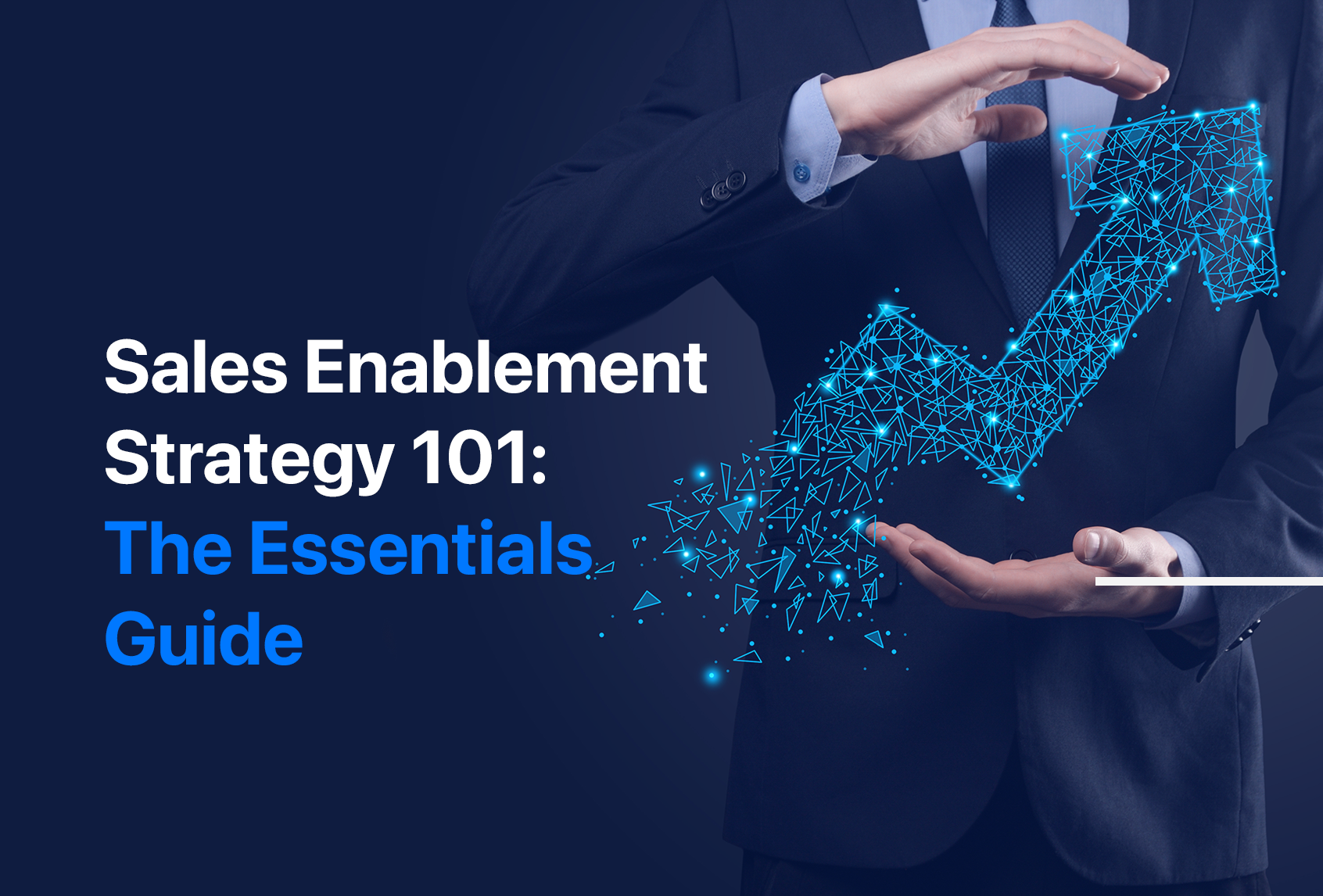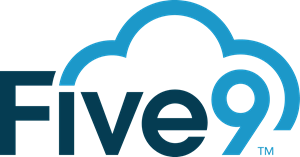Sales Enablement Strategy 101: The Essentials Guide

Sales enablement solves the everyday challenges faced in today’s business communications. This strategy helps teams deal with the complexity of modern-day sales, where traditional methods are no longer effective.
The struggle is real in the fast-paced world of sales. Imagine a team armed with enthusiasm and product knowledge that sets out to conquer the market. They make their initial pitch, leave a lasting impression, and eagerly anticipate the follow-up.
But, alas, time slips away, and the follow-up becomes a game of patience. Days turn into weeks. Before you know it, the promising lead becomes a distant memory.
The potential customer? They've moved on and probably engaged with a more responsive competitor. The outcome is a missed opportunity and, quite possibly, a disgruntled prospect. Sales follow-ups are among the biggest reasons why an effective sales enablement strategy is needed.
Sales enablement is the life raft that rescues sales teams from struggling with missed opportunities. This is because the struggle lies in the details - timely responses, personalized interactions, and the ability to cater to each prospect's unique needs.
Let's look at the essentials for creating a sales enablement strategy and the tools needed to succeed in the ever-evolving market.
Benefits of Implementing a Sales Enablement Strategy
Only around 5% of employees say their organizations can seamlessly plug gaps in their core activities. These gaps, often stemming from insufficient resources or inconsistent commitment, can hinder the efficiency and effectiveness of a company's operations. In the world of sales, sales enablement plays a crucial role.
Here's a breakdown of the tangible benefits of implementing a sales enablement strategy:
Increased Sales Productivity
Time is money. A well-implemented sales enablement strategy streamlines processes, providing your sales team with the tools and resources they need to perform at their best. This translates to more efficient workflows, reduced manual tasks, and, ultimately, a boost in sales productivity.
Improved Customer Engagement
Customers today crave personalized experiences. Sales enablement facilitates this by arming your team with the knowledge and content necessary to engage customers on a more personal level. Tailored interactions build trust and loyalty, improving customer satisfaction and, in turn, repeat business.
Better Alignment Between Sales and Marketing
The infamous gap between sales and marketing often results in missed opportunities and miscommunication. A sales enablement strategy acts as the bridge, aligning the efforts of these two crucial departments. Shared goals, consistent messaging, and a collaborative approach ensure everyone works towards the same objectives.
Increased Competitiveness
Sales enablement tools give your team the edge by keeping them well-equipped and informed. Whether it's through up-to-date market insights or the latest sales tactics, a competitive advantage is achieved through adaptation.
Ongoing Improvement
Success doesn't happen overnight. A well-thought-out sales enablement plan serves as the roadmap, guiding your team toward success. But it doesn't end there - ongoing improvement is the key to staying relevant and effective. Regularly assess and adjust your strategy to adapt to changes in market conditions and customer needs.
Sales enablement is about working smarter, not harder, and ensuring your team is well-equipped for success in the ever-evolving business landscape.
Challenges Faced when Developing a Sales Enablement Strategy
The benefits of a well-executed sales enablement strategy are undeniable. Nevertheless, even with the promise of these advantages, sales managers and leaders may face various challenges.
Here's the lowdown on the common challenges and how to tackle them without breaking a sweat.
Market Changes
The market is inherently dynamic, and staying on top of these changes is a formidable task. An adaptive culture is essential for organizations to swiftly respond to market fluctuations. A proactive approach, regular market assessments, and a willingness to recalibrate strategies are essential to mitigating this challenge.
Customer Journey Shifts
The modern customer journey is intricate, and the challenge lies in comprehending and adapting to the shifts that occur. Employing robust data analytics, conducting customer feedback sessions, and instituting a continuous feedback loop allow organizations to gain insights into the customer journey.
Friction in Sales Processes
Friction within sales processes can hinder operational efficiency and hinder optimal performance. Identifying points of friction demands a meticulous evaluation of things like:
- Internal workflows
- Communication channels
- Technological interfaces
Streamlining these processes, leveraging automation where applicable, and fostering a culture of continuous improvement can significantly alleviate friction, enhancing overall productivity.
Sales Reps' Ability to Have Key Business Conversations
This challenge often stems from a lack of adequate information and inadequate training.
Organizations should invest in comprehensive training programs, equipping sales teams with industry insights, product knowledge, and effective communication skills. This investment bolsters the sales force and enhances the quality of client interactions.
Technological Integration
The integration of new technologies into existing systems poses a persistent challenge. Whether incorporating (Customer Relationship Management) CRM platforms, AI-driven automation, or advanced analytics, ensuring seamless integration without disruption is a top priority.
Technology integration requires robust change management protocols, comprehensive training initiatives, and close collaboration between IT and sales teams.
Balancing Personalization with Scalability
Achieving a delicate balance between personalized customer interactions and scalable processes can be demanding. Implement technology-driven personalization solutions such as Meera, an automated texting service that provides AI efficiency but maintains a human-like experience as you scale.
Adopting agile methodologies enables organizations to strike a balance, ensuring that personalized interactions are not sacrificed in the pursuit of scalability.
Adaptability, continuous improvement, and strategic foresight are the cornerstones of overcoming sales enablement obstacles and steering toward a robust and responsive process.
Components of an Effective Sales Enablement Strategy
Let's dive into the nuts and bolts of an effective sales enablement strategy – the real game-changers that can take your sales performance to the next level.
- Training and Coaching: A robust training program arms your team with the latest product knowledge, sales techniques, and customer insights. Ongoing coaching fine-tunes their skills, turning them into sales all-stars.
- Content Creation and Management: Content is king, and in sales enablement, it's your secret weapon. Creating compelling content tailored to your audience's needs is like crafting the perfect pitch. Efficient management ensures this content is easily accessible when your team needs it most.
- Technology and Tools: Technology streamlines processes, making tasks easier and more efficient. The right tech can supercharge your sales enablement strategy, giving your team the edge in today's competitive landscape.
- Cross-Departmental Collaboration: When sales, marketing, and customer support collaborate seamlessly, no problem is too big to solve. Insights flow, strategies align, and the entire organization moves as one, amplifying the impact of your sales enablement efforts.
What's the result of combining these components? Your sales enablement strategy hits its stride, transforming into an environment where your sales force doesn't just survive but thrives.
These components, working in tandem, unlock your strategy's full potential. They drive sales performance, making your team a formidable force in today's competitive market.
Establishing Buyer Personas and Relevant Content
Understanding your audience is the first step to hitting all the right notes. Begin with:
- Thorough market research
- Dissecting industry trends
- Analyzing customer behavior
Comb through your existing customer data, extracting valuable insights that lay the foundation for buyer personas. Segment your audience based on demographics and preferences, allowing you to create distinct profiles representing your ideal customers.
With these insights in hand, craft detailed buyer personas. Go beyond the basics and delve into your audience's challenges, motivations, and pain points. Tailor your content to meet these needs, ensuring every piece resonates with your buyers. The key is personalization, whether it's blog posts, videos, or case studies.
This isn't a one-time effort but a dynamic process. It's about staying in sync with your audience and adapting as it evolves.
Creating a Customer Journey Map for Your Sales Process
Selling is like guiding your customers on a journey. Crafting a customer journey map tailored to your sales process is the secret sauce to mastering this.
Start by identifying touchpoints where your audience interacts with your company. Understand the nuances of the B2B buying group, considering that B2B buyers spend only 17% of their time meeting potential suppliers. Tailor your sales enablement strategy to each point of interaction, empowering your reps to respond effectively.
Consider key decision-makers in the process, recognizing B2B decision-making dynamics. As your customer progresses, ensure that your enablement strategy evolves with them. By aligning your strategy with the customer journey, you're guiding them through a seamless experience.
Assembling the Right Team for Effective Sales Enablement
Sales enablement success depends on the right team. Building a powerhouse propels your sales enablement strategy to new heights.
Identify individuals within your organization with strong communication and organizational skills. Look for team members who grasp the intricacies of the sales process, understanding the nuances that lead to success. Seek out those who can collaborate seamlessly with sales and marketing teams, bridging the gap between strategy and execution.
Build a team with experience in developing and implementing sales enablement strategies. These are the architects of your success, individuals who bring knowledge and insights to the table.
With the right team, your sales enablement strategy will turn the wheels of success like a well-oiled machine.
Aligning Goals Across the Entire Team for Successful Results
Alignment is the compass that steers your entire team toward success. It's about fostering a united front where every team member contributes to the overarching success of your sales enablement strategy.
Start by initiating the process with a Service Level Agreement (SLA) between sales and marketing teams. This agreement defines each team's expectations, responsibilities, and deliverables, ensuring a seamless collaboration that drives results. Exchange data and insights regularly, fostering a culture of shared knowledge and mutual support.
Set specific, measurable, achievable, relevant, and time-bound (SMART) goals. These goals become the benchmarks against which success is measured. Monitor progress toward established objectives and align your enablement goals with the wider organizational objectives.
Success metrics can’t exist in isolation. They should be tied to revenue targets and expansion goals. When your team's goals are aligned, you create a culture of collaboration and shared success.
Setting Up the Right Tools for Your Team's Needs
Sales teams perform better with the right tools. List the essential tools your sales team needs, including:
- CRM software
- Sales enablement platforms
- Analytics instruments
- Communication solutions
Each tool serves a specific purpose in enhancing efficiency, streamlining processes, and providing valuable insights.
Understand the needs of your sales team and align the chosen tools accordingly. Sales enablement systems offer a centralized hub for all sales-related content and resources.
As cold calling declines, text messaging platforms have kept businesses afloat to maintain communication and are still effective. Meanwhile, analytics provide actionable insights, and communication solutions facilitate seamless interactions.
Ensure the seamless integration of these tools into your existing systems. The key is to optimize their implementation through proper training and ongoing support. A well-integrated toolkit empowers your team with the resources they need to excel in your organization.
Identifying Potential Customers Through Targeted Marketing Techniques
Marketing targeted at specific audiences is a way to raise awareness about a product or service among a subset of the total market. Your marketing scope can be narrowed to a more manageable group of people to improve customer experience.
Embrace account-based marketing (ABM) to focus on high-value accounts. This strategic approach tailors your efforts to resonate with specific businesses, creating a personalized experience that speaks directly to their needs. Optimize content for key customer personas, ensuring that every piece aligns with your target audience's unique preferences and challenges.
Conduct thorough market research to understand current business trends. Study existing customer data, identifying common traits, behaviors, and needs. Create a targeted approach by segmenting your audience based on things like:
- Demographics
- Psychographics
- Purchasing behavior
- Communication preferences
Targeted marketing techniques ultimately enable you to reach people who are a perfect match for what you're offering.
Utilizing Customer Relationship Management Software
Harness the power of CRM software to optimize content, enhance the customer experience, and deliver a personalized journey. In other words, this involves turning every interaction into a valuable one by leveraging technology.
Centralize customer information, interactions, and preferences, ensuring your sales team has a comprehensive view of each prospect. Use CRM to enhance the customer experience by tailoring interactions based on historical data and preferences.
Understand how CRM software can be the dynamic duo when integrated with marketing automation. Together, they streamline processes, automate repetitive tasks, and deliver a cohesive customer journey.
Leverage CRM to gather data on customer engagement with content, analyze buying signals, and identify trigger events that signal the perfect time for engagement.
Be sure to introduce the concept of sales enablement strategies and how they use CRM to deliver a personalized and engaging customer experience. This creates a dynamic environment where every interaction is a step toward a valuable and lasting connection.
Designing Programs That Support Your Overall Goals
Here is a look at specific sales enablement programs and resources that directly support your business goals.
- Product Knowledge Hub: Develop a centralized hub for product knowledge, ensuring your team is well-versed in every aspect of your offerings. This resource becomes the go-to source for detailed information, fostering a deep understanding that translates into confident and effective selling.
- Sales Playbooks: Craft comprehensive sales playbooks that guide your team through various scenarios. These playbooks become the playbook for success, providing step-by-step guidance on navigating challenges, addressing objections, and seizing opportunities.
- Case Studies: Compile case studies that showcase success stories within your organization. These real-world examples become powerful tools for your team, illustrating your product’s tangible benefits and outcomes.
- Whitepapers: Create in-depth whitepapers that delve into industry trends, challenges, and solutions. These resources position your team as thought leaders, offering valuable insights to prospects and establishing your organization as a trusted authority.
Designing programs supporting your goals is essential for creating an organization's strategic toolkit - the groundwork for collective success.
Implementing Initiatives that Motivate and Engage Your Selling Force
Motivated and engaged employees have an 87% lower likelihood of leaving a company. This alone explains the need for your company to implement initiatives that empower your team.
The following initiatives will help engage your sales force:
- Understanding Digital Tools: Equip your team with a solid understanding of digital tools. From CRMs to collaborative platforms, digital dexterity involves easily navigating the tech scene.
- Training for Tech Fluency: Develop training programs that focus on tech fluency. Digital dexterity leverages your team to streamline processes and enhance productivity.
- Data-Driven Decision-Making: Train your team to interpret and leverage data effectively. This not only sharpens their skills but also enhances the overall efficiency of your sales processes.
- Data Analytics Training: Invest in data analytics training programs. Understanding the story behind the numbers empowers your team to make informed decisions, giving them a competitive edge in the market.
- Interpreting Virtual Cues: Make sure your team knows how to interpret virtual signals – from email responses to video call dynamics. Sense-making in the virtual realm is about understanding subtle nuances.
- Tailoring Pitches for Digital Platforms: A one-size-fits-all approach doesn't cut it in virtual selling. Teach your team to tailor their pitches for digital platforms. It's about adapting the art of selling to the nuances of the digital landscape.
Motivating and engaging your sales force in the digital age shouldn't be seen as a challenge but an opportunity. These initiatives develop the digital skills your team needs to become a powerhouse in your organization.
Monitoring Your Progress to Ensure Continuous Improvement
Progress of any kind is a continuous journey. So, how do you ensure you're on the right path with your sales enablement strategy? Here are the key steps that keep your efforts finely tuned to business goals and the needs of your sales reps.
- Establish Clear Goals and Objectives: Clearly define your goals and objectives. What are you aiming to achieve? These benchmarks become the compass guiding your progress.
- Examine the Data: Dive into the data. Examine trends, identify patterns, and understand what's working and what needs improvement.
- Obtain Feedback: What challenges are they facing? What strategies are proving effective? Valuable insights from the sales team inform your adjustments.
- Consistently Review and Revise: Adaptability is the key to staying ahead in sales dynamics.
- Transparent Reporting: Constantly report on results, keeping all stakeholders in the loop. Transparency builds trust and ensures everyone aligns with the overarching goals.
- Align with Business Goals: Your sales enablement efforts shouldn't exist in isolation and should align with broader business goals.
- Periodic Re-evaluation: The sales industry evolves, and so should your strategies. What worked yesterday might need adjustments for tomorrow's challenges.
Continuous improvement should be a business mindset. Embrace the journey, adapt, and thrive.
In Conclusion
Sales enablement serves as a guide to navigating the ever-evolving marketplace for modern businesses. It's about equipping your sales force with the right knowledge, empowering them with the tools to engage effectively, and fostering an environment where collaboration and adaptability thrive.
Success in today's business landscape involves more than just closing deals. To remain competitive, businesses must establish lasting relationships, understand their audience, and continually evolve.
So, invest in the right sales enablement tools, cultivate a culture of continuous improvement, and watch as your sales force transforms into a dynamic, customer-centric powerhouse.
A programmer by trade, Nick Saraev is a freelance writer and entrepreneur with a penchant for helping people achieve their business goals. He's been featured on Popular Mechanics & and Apple News and has founded several successful companies in e-commerce, marketing, and artificial intelligence. When he's not working on his latest project, you can find him hiking or painting.


.png?width=512&height=512&name=guru%20(1).png)

.png?width=199&height=109&name=salesforce-logo1-removebg-preview%20(1).png)


.webp?width=716&height=569&name=banner-img%20(1).webp)

.png?width=352&name=asdfhjsd%20(1).png)

